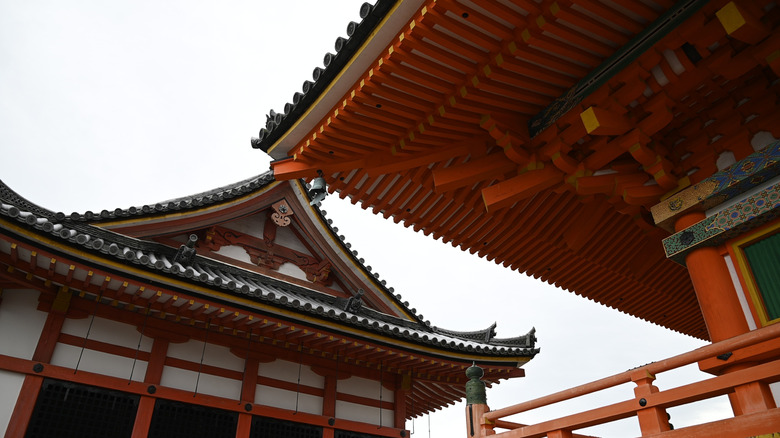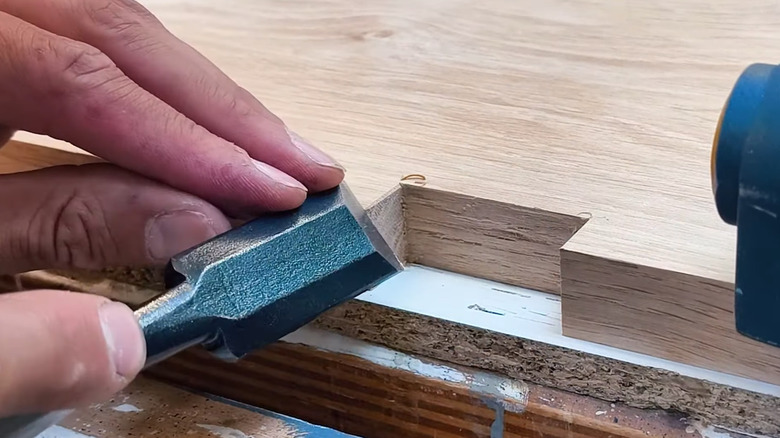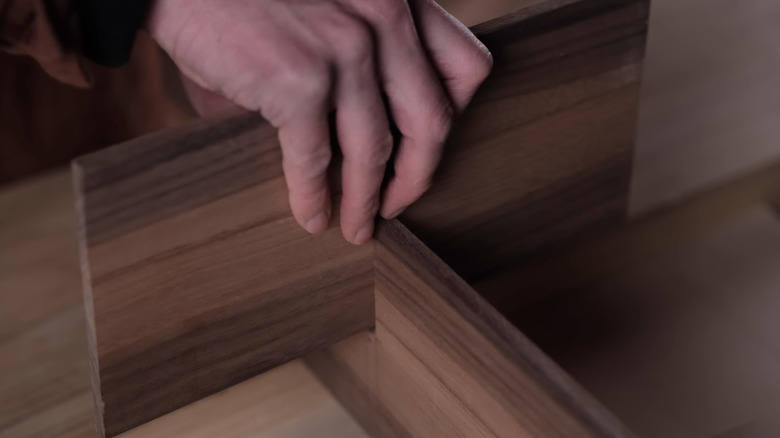Sashimono Explained: What Makes The Japanese Woodworking Technique So Special?
Sashimono is a traditional (and seriously impressive) Japanese woodworking technique that dates back centuries yet is still practiced today. It predates the fasteners used in modern furniture assembly (we're talking woodworking screws, nails, and glue) and is built entirely through interlocking wooden joints. The term "Sashimono" itself stems from monosashi: a woodwork ruler used for the careful measurements that make up this woodworking technique. The Sashimono method also uses intricate mortises and tenons known as hozo to build furniture pieces with a seamless look on the outside and incredible strength within.
Sashimono is part of the much larger belief in harmony between humans and nature in Japanese culture. Japanese carpenters view wood as a living material — something to be respected and worked with, not against. Japan has been rich in forest resources dating back for millennia, which surely played a part in the technique's development as well. Over time, Sashimono has evolved to symbolize an aesthetic ideal: sophistication, subtlety, natural beauty, and (most importantly, at least when dealing with furniture) durability.
Different styles of Sashimono furniture
Over the years, Sashimono has grown and evolved into several regional styles. The two most prominent are Kyo Sashimono (from Kyoto) and Edo Sashimono (from Tokyo). Kyo Sashimono dates back to the Heian period (794–1185) and was historically used to craft things like elegant display cabinets and boxes for members of the imperial court. Because of its high-class origins, Kyo Sashimono pieces are often decorated with gold leaf or fine lacquer.
Edo Sashimono, on the other hand, was developed during the Edo period (1603–1868) when furniture became more accessible as a result of urbanization and a growing merchant class. Artisans in Edo (modern-day Tokyo) focused more on simplicity, allowing the natural beauty of the region's wood to shine through over the fancier decorations associated with Kyo Sashimono.
A third regional variant, Osaka Karaki Sashimono, uses imported woods like rosewood and ebony for items like desks and tea shelves. Even with its different materials, its construction is still in line with the Sashimono way: meticulous detail and enduring build quality.
The past, present, and future of Sashimono
With Sashimono, it's all in the joints. No matter if it's a basic mortise-and-tenon connections or a complex shiho kama tsugi (four-faced gooseneck joint), they're all completely hidden within the structure. Once assembled, a Sashimono piece is nearly impossible to take apart without completely destroying it (that is, unless you're trained in Sashimono yourself).
Sashimono's influence can even be seen in large-scale architecture. For instance, the Horyu-ji temple in Nara Prefecture was built with wooden joinery 1,300 years ago and remains standing today. Alas, in the face of both modernization and deforestation, Sashimono is on its way to becoming a lost art form. After all, this is no small woodworking project for beginners. For the art form to survive, efforts to preserve ancient Sashimono pieces need to expand to involve apprenticeships as well. With some fresh thinking and a new generation of artisans, here's hoping Sashimono can carry on for another thousand years.


